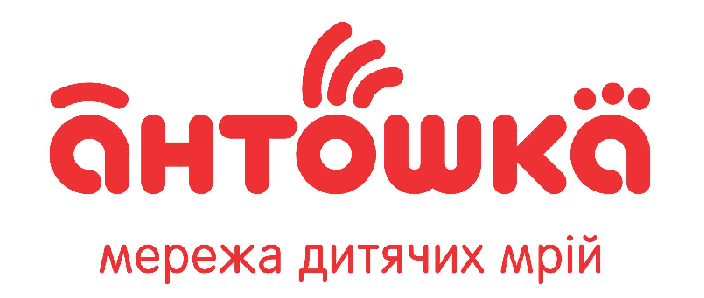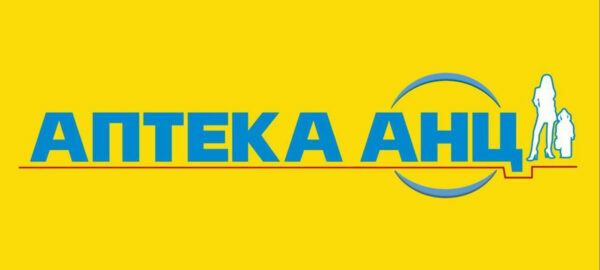
Employee motivation for training and where to find it. Tips from the experts
Motivated employees are engaged workers. It is the motivation that directly determines the effectiveness of learning. If an employee does not have the desire and interest to develop, learning will not give solid knowledge and will only discourage them. Therefore, it is important to motivate employees and constantly keep them interested in development.
How to increase employees’ motivation for learning? The e-learning experts Victoria Balachuk, Anastasia Dyachko and Ekaterina Martirosova helped us with this question.
Recommendations from experts
 Victoria Balachuk – Head of Customer Success, Product Owner LMS Collaborator, mentor El`Lab
Victoria Balachuk – Head of Customer Success, Product Owner LMS Collaborator, mentor El`Lab
The most productive and conscious motivation is internal, when a person understands that learning is necessary for achieving one’s own or the company’s goals. However, such motivation is the most difficult to achieve. The first task to reach it is to have a company culture that supports learning and development in every way, it should be one of the company’s values.Adaptation of training for a specific employee is very important as personal development plans in accordance with the results of the competence assessment (or other methods used in the company). The employee sees their “weaknesses”, they have an understanding of what exactly needs to be taught and what exactly in their case. It is also important to take into account the person’s abilities because if you act according to the abilities, the user will be more motivated to learn since they get everything quickly and easily without any additional efforts.
 Anastasia Dyachko – Specialist in the development of an employee training system
Anastasia Dyachko – Specialist in the development of an employee training system
Most people’s resistance to learning can be traced back to the school desk: knowledge that is not interesting, homework, tests, exams, grades. Moreover, the pressure of parents and teachers. As a consequence, we formed a strategy of resistance to learning in adulthood, because school is over, and everything I already know everything I need to work. 🙂
The more the training department will be similar to the school system with pressure and authoritarianism, the greater will be the resistance and unwillingness to learn from employees (the more they will have to self-learn in the LMS). With a large number of employees and the scale of the company it is still difficult to get away from the pressure, but it is definitely possible to reduce it by several times.
What methods can be used for this:
1. Produce practical materials.
All materials in the LMS system must be useful to the employee. Therefore, all content that concerns the development of hard skills must be developed and validated only with the participation of internal experts. Also the simplicity of use and simplicity is important, eliminating wordinnes.
2. Promote the fashion for the need to develop.
The goal of the training must be understood by everyone and be incorporated into the development program, after which the employee acquires a certain status. Supplement theory with workshops with experts and the opportunity to practice new tools and receive a call from the professionals. Keep in touch with the best in training and their professional successes.
3. Reward for systematic learning.
Consider such people as mentors, internal coaches for newcomers in the company on certain topics. Create valuable electronic certificates and puzzles that need to be collected in order to achieve a certain status. Conduct assessments for only those employees who have undergone timely training in their positions.
LMS Collaborator has various tools of gamification, which help to support the motivation of collaborators. One of them is badges.
Do you want to try how they work in practice? Submit your application, get a free trial period and we will show you all the features of the system.
4. Involve the company’s leaders and top management in training and content development.
This will stimulate the interest of employees to study the material. Broadcast a culture of exchange of experience and the values of development.
5. Form a unified conceptual field and terminology with content.
For example, if a company is commercial and has many categories of employees who use analytics, calculations, and sales tools, developing courses with common concepts, explanations, formulas, and calculations will help the company create its own language. In which it will be faster, more specific and clearer to work, communicate, report and train newcomers.
6. Pay more attention to those who are interested in learning.
If your content and development system help employees in their work and grow through acquiring new knowledge, there will be no need to force them to learn later. In any case, 10-15% of people will broadcast their negative attitude towards development. Instead of forcing them and spending a lot of effort on arguments, develop those who have already gotten results–more sales, faster analysis, better motivation and team organization. Looking at the achievements of others, increasingly negative employees will go to the LMS account.
It’s all a creative, synergistic process between the training department and the employee team. It is dynamic and balances the interests of the business and employees. All the necessary tools are in the LMS.
Katerina Martirosova – co-founder «2People», e-learning спеціаліст
The most popular question from the developers of corporate training courses – What to do to make employees want to take our courses? It is understandable, the specialists invest their knowledge and skills, create in their opinion a very necessary educational product and want their work to be of interest to the target audience.
A list of possible reasons:
- The course is irrelevant and does not meet the needs of employees
- The value of the course is not clear for the target audience
- Poor PR was conducted before the launch
- Video lectures and course are too long in duration
- Materials in the course have complicated terminology (exception is training in specific topics)
- The program and course regulations were not communicated in advance
- No trust in the course experts
- Absence of the value of learning and development in the corporate culture
What to do?
Let’s look at the example of the successful launch of a management training project for our clients. The task was to teach the basics of management to all the executives, about 200 people.
Our actions, which influenced the involvement and motivation:
- We determined the format. After analyzing the content and length of the program, the portrait of the participants, and technical limitations, we decided on an online format.
- We designed the mechanics so that students would spend between 30 minutes and 1 hour a day on training. The cycles included: watching video clips (7-10 min), homework, independent work, practical work with tutors.
- Before the launch of the program a PR-campaign was carried out. For this purpose we involved top management as ambassadors, whose task was to record a video message about the importance and value of this training and to announce the program at weekly meetings in their units.
- We sent out a video message to the employees’ corporate mailboxes and published it on the internal portal. It was important to get the message across that the knowledge and ability to use the technology taught in the course would help with work and career advancement.
- We created a Telegram chat for participants. To enter it, it was necessary to take a test on the platform of the program. After its completion, the employees received feedback depending on the number of points and the QR code for the chat. For example, if a participant scored low, the answer was: You’re in the right place at the right time! On this course you’ll get the most useful information and tools for your work. Probably you will be a lot of new things, but on practical sessions you will be able to try and see their effectiveness.”
- We identified and appointed a chat administrator whose task is to communicate, encourage, answer questions, and solve technical problems. This is very important when it comes to training in an online format. Perhaps the presence of an administrator does not motivate to learn, but the lack of feedback and help during the program irritates and demotivates participants.
- For the first 3-4 weeks after the start of the course, the administrator reminded participants in the chat room what was waiting for them today – to watch a lecture or a deadline for homework.
- They described the rules of the program in great detail. To increase the attractiveness of the course, one of the rules was the exclusion of participants for poor performance – not completing more than 3 homework in a row, systematic absence from the practical sessions, and so on. Tough? Maybe. But those who do not want to develop without it will not and, in our experience, in the near future will leave the company, and you will spend your energy and resources on them.
- And the “cherry on the cake” is the gamification. We created the entire app in the style of Cyberpunk. From the platform design, storyline, and video teaser to the fictional character who interacted with the participants. Yes, that course administrator was in charge of this character. You can talk about gamification long and hard, but its impact on motivation is hard to overestimate. And if you can use gamification elements in your training, do it.
You can take something from the list above. But there is a universal algorithm that will work for any company. It will help create training that employees will want to participate in.
Answer the questions and make an action plan to improve your current learning or before launching a new one:
- Who is the customer? It is necessary to find an internal customer who can formulate the purpose of training and criteria for evaluating its effectiveness. The criteria can be quantitative and/or qualitative. It is important to fix them in the format of a result, not a process. For example, goal-process: “Teach staff to work on new equipment. Goal-result: “100% of the personnel know how to work on the new equipment starting from 1.01.2022”.
- Is it aligned with the strategy? If training is not aligned with the company’s mission, vision, and values, employee and management engagement with the training will be equal to zero.
- Who is the target audience? Analyze the portrait of training participants – how many employees you want to teach, age, gender, interests, positions, work experience, hardware limitations (availability of computers/smartphones), work schedule, etc. The more information you gather, the better.
- Which format? Based on the information you already have, determine the online/offline format, internal portal/Telegram channel, classical training/gamification, etc.
- Who is the expert? Decide who the lecturer/trainer/speaker will be-an internal or external trainer, company employees with the necessary expertise, or perhaps you purchased the course from an outside organization. A mistake that decreases engagement in the course is bringing in an incompetent expert. At best, participants will tell you about it, at worst they will share their opinion with others on the sidelines: “Oh, what can he/she teach us? He/she has never negotiated (never sold, never managed anyone, etc.).
- How to promote? More specifically, how to sell your training product. Imagine that you are a company that sells your product, and your employees are potential customers. And their currency is the time they will or will not spend on your product. This is where you need to mention marketing chips and start using them. Tell them about the benefits and advantages, brightly announce your product, involve opinion leaders in the promotion, record a video message from the CEO, use all possible contact points, channels of communication with employees – mail, portal, weekly news, banners in busy places in the office.
Create training that you yourself would like to pay for, treat your projects with trepidation, collect success stories, and speak proudly of your accomplishments. Engage and make management your co-conspirators and you won’t have to ask any more questions: “What do we do to make employees want to take our courses?”
Conclusion
- One of the company’s core values is to support learning and development. To keep staff motivated to learn, you need to tailor the training process specifically to each employee. Individual development plans can help you do this.
- The most important motivation in training is the inner desire of employees to develop and learn new things. The more pressure and authoritarianism on the part of the training department, the more employees will resist.
- All training materials should be understandable and useful to the employee. Develop and approve content only with input from internal experts.
- Training should align with the company’s mission and culture. Otherwise, employee and management attraction to training will equal zero.
- Take the selection of the trainer seriously. He must have the necessary competencies, to evoke trust and credibility with employees. Attracting an incompetent expert will reduce attraction.
- “Sell” your training. Use different marketing tricks to promote training among employees. Make a training announcement, involve opinion leaders in the promotion, record a video message from the CEO, use all possible channels of communication with employees – mail, portal, weekly news.
Do you want to not only automate training, but also increase employee motivation? Use the LMS Collaborator tools.
LMS Collaborator is more than just a distance learning system. It is a platform with extensive corporate communication and motivation capabilities.



































